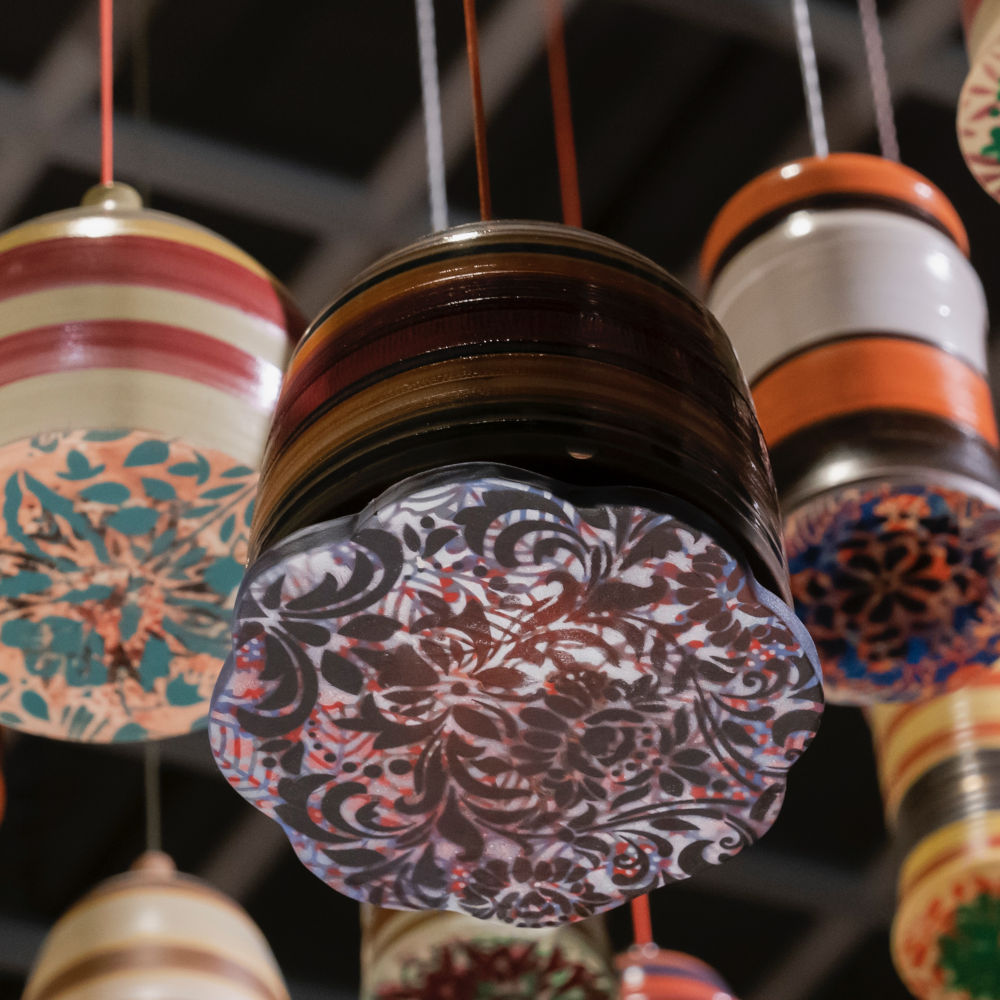

The ceramic artist shares more about the ideas behind his installation, Candy Garden.
Published: 19 Aug 2021
Time taken : ~10mins
Artist Ahmad Abu Bakar elaborates on the ideas and sources of inspiration that underpin the installation Candy Garden.

Installation view of <em>Candy Garden</em>, 2021
Most of my works explore the notion of perfection and balance. For example, the vessels that I throw are an expression of balance in terms of their form. For me, their symmetrical structure creates a narrative of what is perceived to be perfect. However, as the artist and maker, I also see their imperfections.
Likewise in Candy Garden, the ceramic pieces represent the attempt to create a perfect and beautiful world—both collectively and individually. Seen in its totality, the work might appear to be flawless. However, upon closer inspection, one would notice tiny details like the varied brushstrokes, the jagged edges of lines, or a slight deviation of a symmetrical form. However, these incongruities also give each ceramic its individual characteristic and quality.
I wanted to create this feeling of order within disorder, to allude to the notion and tensions of beauty and imperfection coexisting. The work plays with space and a variety of colours and lines, alluding to this idea of chaos. However, there are elements within them that create harmony when they are strung together.
The beauty of the whole work, I feel, comes from its internal chaos, tying into the idea that the "perfect” is based on our perception. Through these flaws, I wanted to express that perfection often comprises the interplay between order and chaos.

Installation view (detail) of <em>Candy Garden</em>, 2021
I took inspiration from the Singapore skyline as I attempted to create an imaginative visual narration of this “wonderful” and “perfect” world. I hope that audiences will have a pleasant visual experience when they view Candy Garden. The sculpted forms and clusters also provide an opportunity to be fully immersed in the spatial quality of the ceramic installation. I wanted the experience of walking around the work to be similar to that of journeying through a garden, as alluded to by the floral prints.
Additionally, the dramatic nature and imaginative quality of the work was determined by the technical usage of glazes, underglazes and colour choice.

Installation view of <em>Candy Garden</em>, 2021
I have always been amazed by ancient architecture. I am fascinated by its dynamism, monumental quality and use of form and space. Some places that have been impactful to me and my personal sentiments include Angkor Wat in Cambodia, Borobudur in Indonesia, Hagia Sofia and Blue Mosque in Turkey, as well as Wat Arun in Thailand. They continue to influence my approach to form and space.

Installation view (detail) of <em>Candy Garden</em>, 2021
Two elements exist alongside each other in Candy Garden—the architecture and the garden. As the work references a garden, it seemed fitting to decorate the work with flora so that audience members can relate to the concept and idea. I decided to overlap various image of flora and geometric patterns to create a complex design. The layering of different stencils using geometrical and floral motifs resulted in interesting outcomes that evoke the textiles and design patterns often seen in Singapore, Malaysia and perhaps even other parts of Southeast Asia.

Installation view of <em>Candy Garden</em>, 2021
Initially, I wanted to use the paracord for its functionality to suspend the ceramics. But when I started to see the colourful ceramics develop, that was when I decided that it was important that they are hung using these brightly-hued paracords. The whole idea behind Candy Garden is to make it as colourful as possible tosuggest chaos within the structured clusters forms.
I always want to describe myself as an artist who will allow things to unfold according to chance. Yes, you could say that this marks a new trajectory in my practice. I am now especially excited by colours as well as the connecting notions between form, object and meaning. I hope to explore new concepts and philosophical ideas in my practice which will develop and translate into the aesthetics of my work.
Check out Ahmad’s Candy Garden at the Esplanade Concourse from 14 May to 5 Dec 2021.